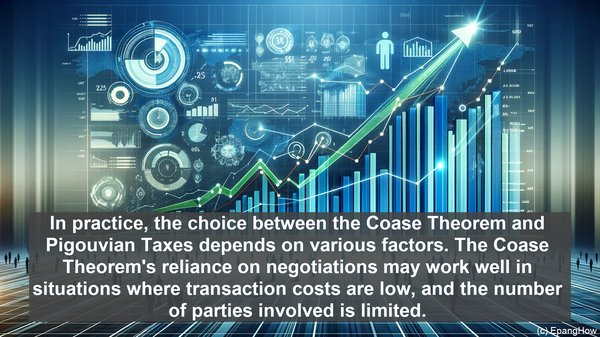Introduction: The Challenge of Externalities
Hello everyone! In the realm of economics, externalities pose a significant challenge. These are the spillover effects of economic activities that impact parties not directly involved in the transaction. Today, we’ll explore two approaches to tackle externalities: the Coase Theorem and Pigouvian Taxes.
The Coase Theorem: Negotiating Solutions
The Coase Theorem, formulated by Ronald Coase, suggests that in the absence of transaction costs, affected parties can negotiate and arrive at an efficient solution themselves. According to this theorem, if property rights are clearly defined and bargaining is costless, the outcome will be the same, regardless of the initial allocation. In essence, the Coase Theorem emphasizes the importance of well-defined property rights and the potential for private solutions to externalities.

Pigouvian Taxes: Correcting Market Failures
Pigouvian Taxes, on the other hand, take a different approach. Named after economist Arthur Pigou, these taxes aim to internalize the external costs or benefits associated with a particular activity. By imposing a tax on activities generating negative externalities or providing subsidies for positive externalities, Pigouvian Taxes attempt to align private costs and benefits with social costs and benefits. The underlying idea is to correct market failures by incorporating the external costs or benefits into the decision-making process.
Comparing the Approaches: Coase vs Pigou
While both the Coase Theorem and Pigouvian Taxes address externalities, they differ in their mechanisms and implications. The Coase Theorem relies on voluntary negotiations, assuming no transaction costs. It emphasizes the role of property rights and the potential for mutually beneficial agreements. On the other hand, Pigouvian Taxes involve government intervention, with the aim of altering the behavior of economic agents through financial incentives. These taxes can generate revenue for the government, but their implementation requires careful consideration of the appropriate tax rate and the elasticity of demand or supply.

Real-World Applications: Coase and Pigou in Action
In practice, the choice between the Coase Theorem and Pigouvian Taxes depends on various factors. The Coase Theorem’s reliance on negotiations may work well in situations where transaction costs are low, and the number of parties involved is limited. On the other hand, Pigouvian Taxes may be more suitable when the externalities are significant, and negotiations are impractical. For instance, in the case of pollution, where multiple parties are affected, Pigouvian Taxes can provide a more straightforward mechanism for internalizing the costs.
